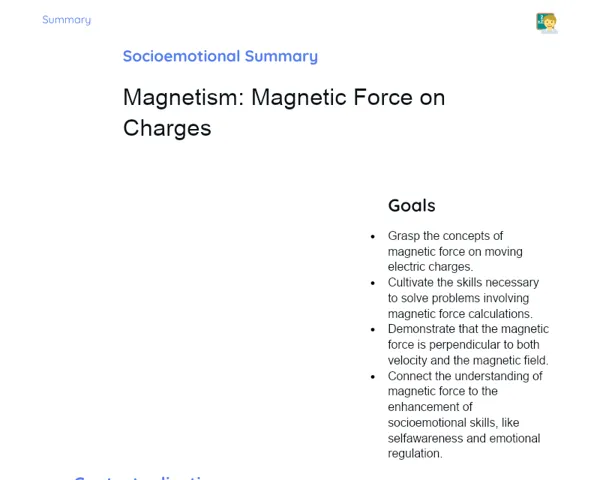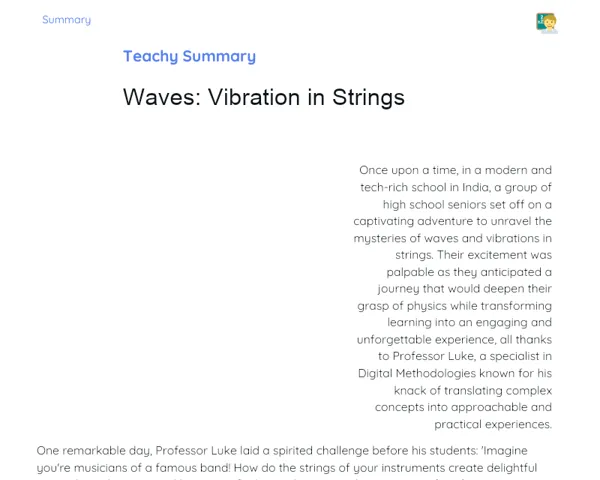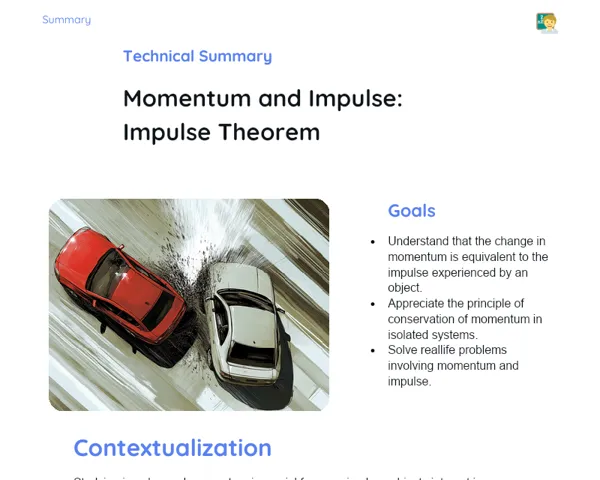Goals
1. Grasp the idea of the restitution coefficient and its importance.
2. Recognize and distinguish between various types of collisions: elastic and inelastic.
3. Compute the velocity before and after collisions using the restitution coefficient.
4. Connect the restitution coefficient to real-life situations we encounter daily and in our work.
Contextualization
Picture a game of billiards, where each shot serves as a practical lesson in physics. When one ball hits another, diverse forces come into play, and how these balls respond is governed by a key concept: the restitution coefficient. This coefficient aids in comprehending how energy is transferred and dissipated during collisions, whether in a billiards game, during road accidents, or even in the production of sports gear. For instance, in designing airbags and helmets, understanding how energy absorbs during a collision can mean the difference between safety and peril.
Subject Relevance
To Remember!
Restitution Coefficient
The restitution coefficient gauges how the relative speed between two objects changes post-collision. It ranges from 0 to 1, where 1 signifies a perfectly elastic collision (no energy loss) and 0 indicates a perfectly inelastic collision (maximum energy loss).
-
The restitution coefficient is dimensionless.
-
It helps determine the energy efficiency of a collision.
-
Values closer to 1 denote elastic collisions, where little to no energy is lost as heat or deformation.
-
Values nearer to 0 indicate inelastic collisions, with considerable energy loss.
Elastic and Inelastic Collisions
Collisions are categorized as elastic and inelastic based on the preservation of kinetic energy. In elastic collisions, the system's total kinetic energy remains intact. In inelastic collisions, part of the kinetic energy transforms into other energy forms, such as heat or deformation.
-
Elastic collisions: the total kinetic energy pre and post-collision remains unchanged.
-
Inelastic collisions: there is a reduction in kinetic energy that converts into other energy forms.
-
In completely inelastic collisions, the objects adhere to each other after impact.
-
The restitution coefficient quantifies the elasticity of the collision.
Calculating Speeds in Collisions
To determine the speeds of bodies before and after a collision, we employ the restitution coefficient alongside the principles of momentum conservation. These calculations are vital for comprehending collision dynamics.
-
The formula for the restitution coefficient is e = (v2' - v1') / (v1 - v2), where v1 and v2 represent the speeds prior to the collision, and v1' and v2' denote the speeds afterward.
-
Momentum conservation principles must work in conjunction with the restitution coefficient to solve collision scenarios.
-
These calculations apply to various practical examples, including road accidents and billiard games.
Practical Applications
-
Automotive Industry: The restitution coefficient plays a role in designing safety systems, like airbags and controlled deformation zones, aimed at minimizing impact during accidents.
-
Sports: When developing tennis balls, basketballs, and similar sports items, the restitution coefficient is essential for ensuring optimal performance and athlete safety.
-
Materials Engineering: In creating new materials for helmets and protective packaging, the restitution coefficient is factored in to maximize energy absorption and safeguard users.
Key Terms
-
Restitution Coefficient: A measure of how efficiently a collision conserves kinetic energy.
-
Elastic Collision: A collision type where total kinetic energy is preserved.
-
Inelastic Collision: A collision type where part of the kinetic energy is transformed into other energy forms.
-
Momentum: A conserved quantity in collisions, calculated as the product of mass and velocity of an object.
Questions for Reflections
-
How can the restitution coefficient concept be leveraged to enhance vehicle safety during accidents?
-
In what ways does understanding elastic and inelastic collisions influence the development of sports gear?
-
How could knowledge of the restitution coefficient be beneficial in your upcoming career or personal projects?
Investigating Collisions with Tennis Balls
This mini-challenge seeks to reinforce the understanding of the restitution coefficient through a straightforward and accessible hands-on experiment.
Instructions
-
Grab a tennis ball and a ruler.
-
Drop the tennis ball from a specified height (say, 1 meter) and observe the peak height it reaches after bouncing off the ground.
-
Measure the bounce height and note down the values.
-
Calculate the restitution coefficient using the formula: e = (bounce height) / (initial height).
-
Repeat the experiment three times and compute the average of the resultant restitution coefficients.
-
Compare your findings and contemplate the energy efficiency during the tennis ball's interaction with the ground.



